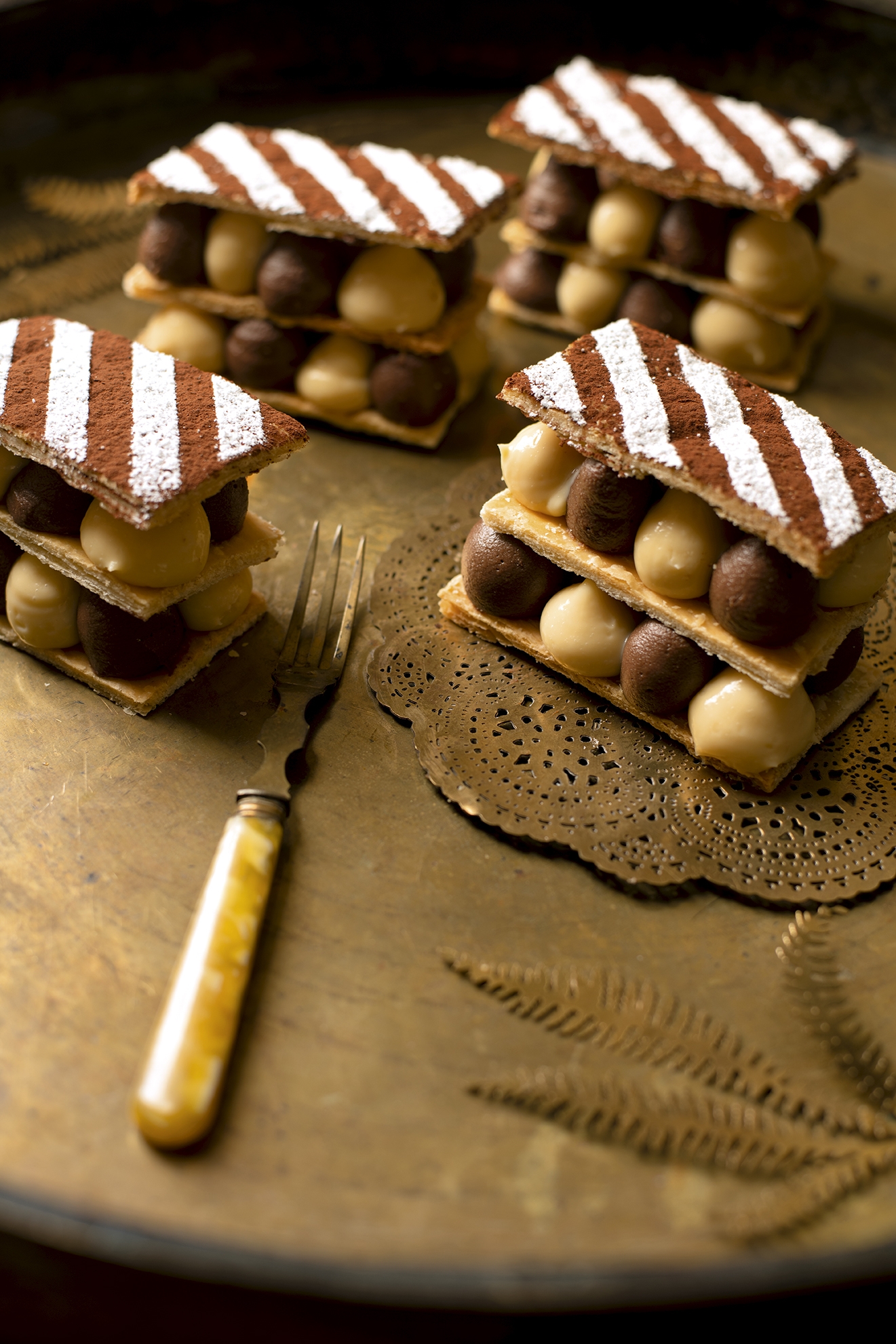Get Premium access to all the latest content online
Subscribe and view full print editions online... Subscribe
Makes 6 (Start 1 day before serving) Cakes, Bread and Pastries
The day before, make the crème patissière. Put the dark and blonde chocolate into separate medium bowls. Mix the sugar and cornflour in another bowl and mix together, then add the egg yolks and blend until pale and smooth.
Heat the milk and double cream in a pan over a low heat for around 2 minutes. Pour on to the egg mixture, then return to the pan over the heat and stir continuously until the mixture starts to thicken. Remove from the heat and stir until you have a smooth custard. Return to the heat and keep stirring for a few minutes, then take off the heat.
Measuring accurately, add 4tbsp of the custard to the dark chocolate, then equally divide the remaining custard – it’s a good idea to use digital scales – between the 2 bowls of finely chopped chocolate and stir to melt. Allow to cool, then put a sheet of cling film over the surface of each crème patissière and store in the fridge overnight.
Next, make the pastry rectangles. Preheat the oven to 190C/170C F/Gas 5.
Lay the pastry sheet between 2 sheets of baking paper on a clean work surface and roll it out a little more to around 35cm x 24cm, to fit a baking tray that is just a little larger. Pull the pastry on to the flat side of the baking tray, remove the top layer of paper and dust the surface with icing sugar. Lay the paper back on again, then put another baking tray on top, flat side down. Weigh it down with either an ovenproof casserole lid or more trays, put in the oven and bake for 15 minutes.
Remove the top baking tray/s and/or lid and top layer of paper and bake for a further 10 minutes until crisp and golden.
Invert the pastry on to a cooling rack, remove the bottom layer of paper and leave to cool.
When cold, slide on to a cutting board. Using a serrated knife, cut the pastry into 20 equal rectangles measuring 8cm x 4.5cm (make a cardboard template for this if it helps). Store in an airtight container overnight or for a maximum of 2 days.
The next day, remove the dark crème patissière from the fridge a few hours before piping, but leave the blonde version in the fridge until ready to pipe.
To assemble, fit 2 piping bags with plain 1cm nozzles, fill one with the dark and the other with the blonde crème patissière.
Lay the pastry rectangles on a few trays. Take 12 pastry rectangles and pipe 8 blobs on to each, alternating the dark and blonde crème patissière. It may help to put a tiny smear of crème patissière under each one to hold it in place while piping.
If you want a striped effect for the dusting on top, cut a stencil out of cardboard with stripes.
Just before serving, put one layer on top of another to make 6 millefeuilles. Dust 6 of the remaining pastry rectangles with icing sugar, using a small sieve. (You have 2 spare rectangles in case any of them break). For a striped effect, lay the striped stencil on top and dust with the cocoa powder. Alternatively, dust 3 with icing sugar and 3 with cocoa powder. Add a pastry top to each of the 6 millefeuilles.
Cook’s note Dulcey or blonde chocolate is caramelised good quality white chocolate. It’s available in supermarkets and online, or you can easily make your own (see recipe here).
This recipe featured in the Christmas 2022 issue of Food and Travel. To subscribe, click here.

Advertisement
Subscribe and view full print editions online... Subscribe